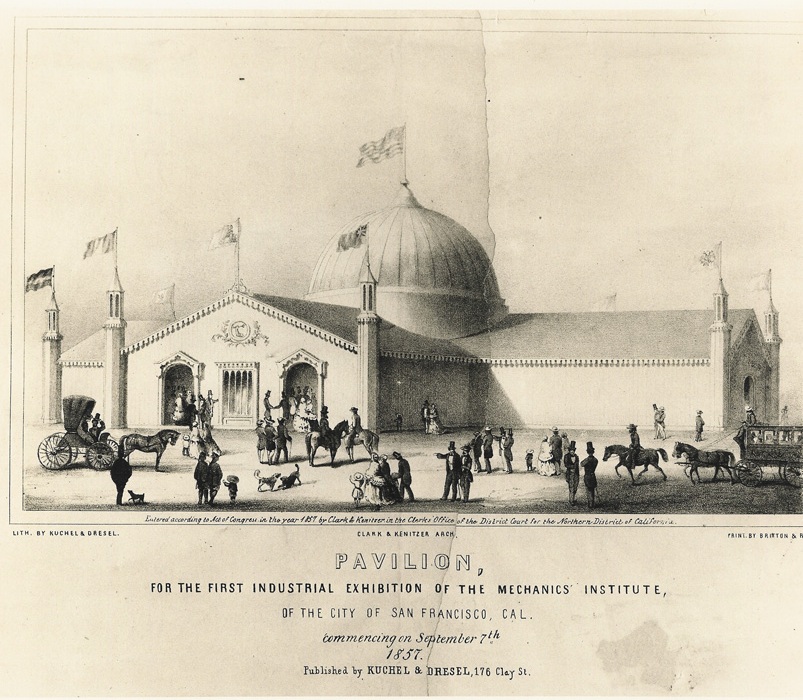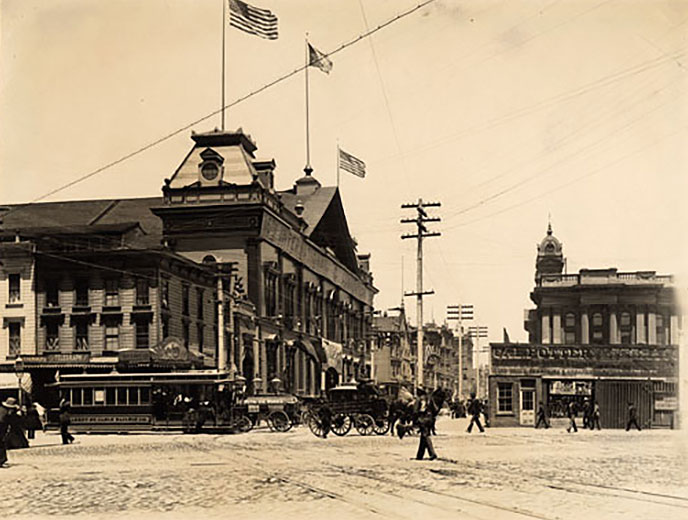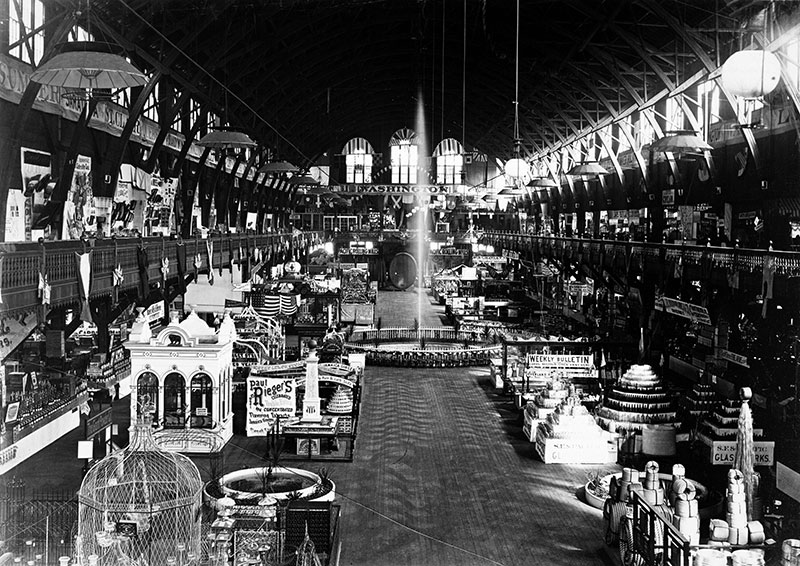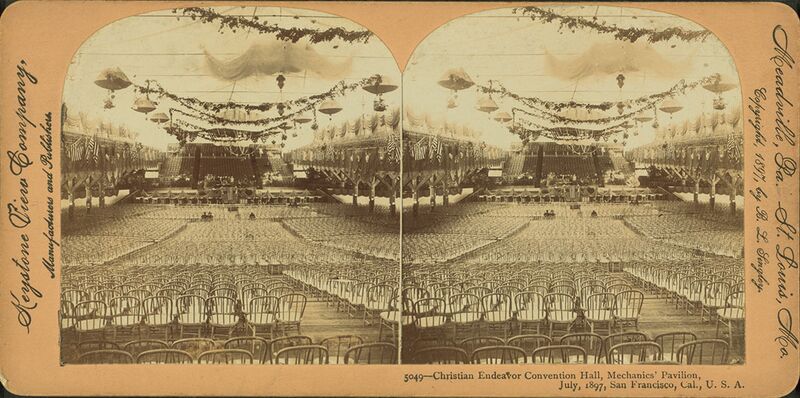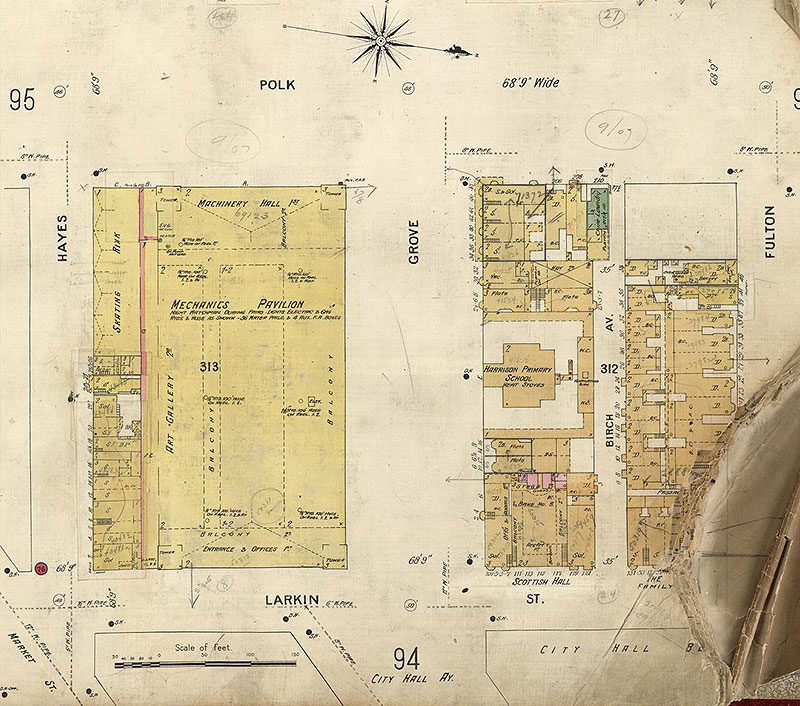Mechanics Pavilion
Unfinished History
By the summer of 1857 the Mechanics Institute erected a Fair Building on a sandy hill on the outskirts of town—on Montgomery Street between Post and Sutter. The wood frame building had a canvas roof and was approximately 18,000 square feet—then the largest building in California. The interior was cross-shaped, with four rooms that opened onto a central lobby. Beneath the dome was a bubbling fountain festooned with flowers and above, hanging from the rafters was a huge eagle with wings outstretched—a symbol of the State's potential.
On display one found an astounding array of the State's natural resources, invention and ingenuity. There were four examples of billiard tables, cabinets filled with curiosities, samples of the state's minerals, a bountiful display of the State's finest flowers, fruits and vegetables; a fire engine, fancy articles such as needlework, fabrics and laces, and art— from the Nahl brothers, William Jewitt, and many others.
The first fair lasted for nearly four weeks and had about 10,000 visitors (roughly 25% of the adult San Francisco population at the time). There were 650 different exhibitors with approximately 25% of them being women. Ultimately there would be 31 fairs between 1857–1899 which would contribute greatly to the economy and industrial pursuits of the San Francisco Bay Area. These fairs, and the rental of the fair buildings, were income generators for the Institute and supported its library and other services.
—description courtesy Mechanics Institute history
The Mechanics Pavilion was the exhibition hall of the Mechanics Institute. The next Mechanics Pavilion was built on Union Square in 1864.
The old Mechanics Pavilion on the west side of Stockton Street between Post and Geary in 1867, before it moved west to make way for the new Union Square.
Photo: OpenSFHistory.org wnp71.1466
The third Mechanics Pavilion, seen here on Grove Street and Larkin Street. After burning up during the 1906 quake and fire, it was later replaced by the Civic Auditorium.
Photo: courtesy Stephen A. Ness
A larger Mechanics Pavilion was built next to City Hall in 1882. It was the first major indoor arena in San Francisco, seating nearly 11,000.
The 1876 Mechanics Exposition, held in a new hall near today's Civic Center, featured a wide variety of products. Such fairs were local events that allowed people to discover new technologies, new products, new ways of doing things. Later World's Fairs took up the same role, and eventually it all gave way to modern advertising and trade shows.
Photo: Carleton Watkins, courtesy Getty collection
Stereoptic postcard of an 1897 Christian Endeavor convention held in Mechanics Pavilion.
courtesy Stephen A. Ness
The Mechanics Pavilion became a temporary hospital and morgue when the April 18, 1906 earthquake seriously damaged Central Emergency Hospital in the basement of City Hall, but it was hastily evacuated the following morning as the “Ham and Eggs fire” approached. City Hall and the Pavilion burned at about 1 PM on the 19th.
Pre-quake Sanborn Insurance map shows precise location of the Mechanics Pavilion on the block where the Civic Auditorium was erected to celebrate the 1915 Panama-Pacific International Exposition.
The Mechanics Institute sold the Pavilion block to the city in 1912 for $700,000. The city built San Francisco Civic Auditorium (now Bill Graham Civic Auditorium) on the site for the 1915 Panama-Pacific International Exposition. [category:1870s]]

